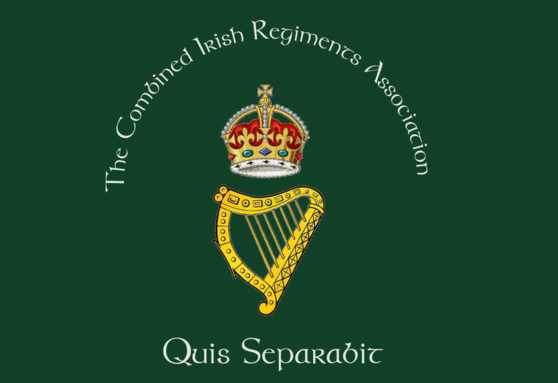
The HISTORY OF THE ASSOCIATION.
Today’s Annual Commemorative Parade and Service of Remembrance owes its origins to that memorable date, 12th June 1922, when, at a highly emotive and solemn ceremony at Windsor Castle, His Majesty King George V received the Colours of five southern Irish Infantry Regiments and a Regimental engraving on behalf of the South Irish Horse since they possessed no colours or standards.
King George then made the following promise:
”I pledge my word that within these ancient and historic walls your Colours will be treasured, honoured and protected as hallowed memorials of the glorious deeds of brave and loyal Regiments.”
The loss of these regiments had a significant impact upon the British Army when one considers that the Army commanded by the Duke of Wellington in the early 19th Century comprised one third Irishmen, including, of course, “The Iron Duke” himself.
The Disbanded Regiments:
Royal Irish Regiment (18th Foot).
Prince of Wales's Leinster Regiment (Royal Canadians).
During the First World War, statistics indicate that up to half a million Irishmen served voluntarily in the British Army and, at the time, this represented about one eighth of the total population of Ireland.
The Second World War saw an estimated two hundred thousand Irishmen, from all parts of the island, again volunteering to fight tyranny and, indeed, most of the Army’s Field Marshals hailed from Ireland including Alanbrooke, Alexander, Auchinleck, Dill, Gort, Montgomery and Montgomery-Massingberd.





